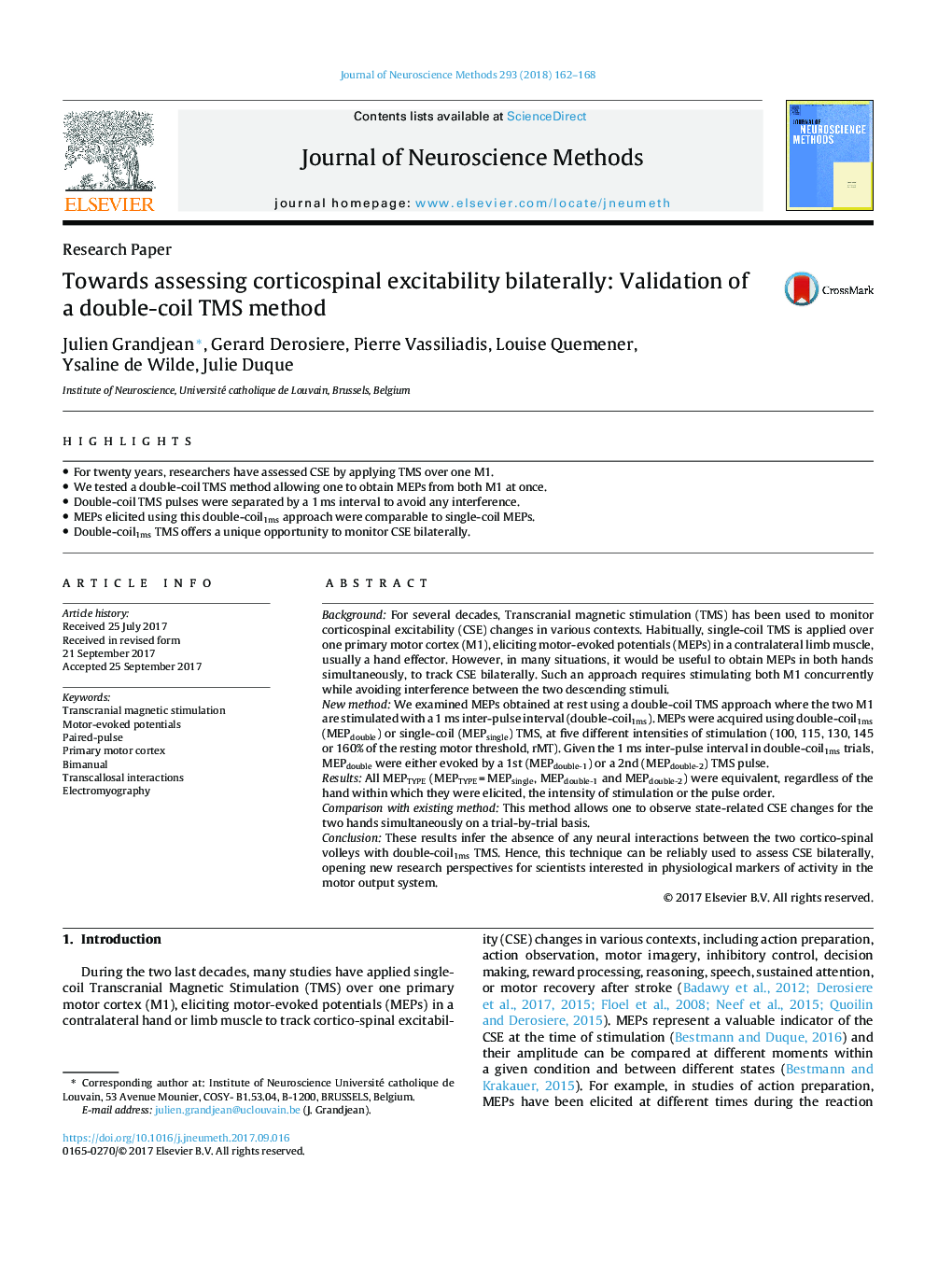| کد مقاله | کد نشریه | سال انتشار | مقاله انگلیسی | نسخه تمام متن |
|---|---|---|---|---|
| 5737109 | 1614576 | 2018 | 7 صفحه PDF | دانلود رایگان |

- For twenty years, researchers have assessed CSE by applying TMS over one M1.
- We tested a double-coil TMS method allowing one to obtain MEPs from both M1 at once.
- Double-coil TMS pulses were separated by a 1Â ms interval to avoid any interference.
- MEPs elicited using this double-coil1ms approach were comparable to single-coil MEPs.
- Double-coil1ms TMS offers a unique opportunity to monitor CSE bilaterally.
BackgroundFor several decades, Transcranial magnetic stimulation (TMS) has been used to monitor corticospinal excitability (CSE) changes in various contexts. Habitually, single-coil TMS is applied over one primary motor cortex (M1), eliciting motor-evoked potentials (MEPs) in a contralateral limb muscle, usually a hand effector. However, in many situations, it would be useful to obtain MEPs in both hands simultaneously, to track CSE bilaterally. Such an approach requires stimulating both M1 concurrently while avoiding interference between the two descending stimuli.New methodWe examined MEPs obtained at rest using a double-coil TMS approach where the two M1 are stimulated with a 1Â ms inter-pulse interval (double-coil1ms). MEPs were acquired using double-coil1ms (MEPdouble) or single-coil (MEPsingle) TMS, at five different intensities of stimulation (100, 115, 130, 145 or 160% of the resting motor threshold, rMT). Given the 1Â ms inter-pulse interval in double-coil1ms trials, MEPdouble were either evoked by a 1st (MEPdouble-1) or a 2nd (MEPdouble-2) TMS pulse.ResultsAll MEPTYPE (MEPTYPEÂ =Â MEPsingle, MEPdouble-1 and MEPdouble-2) were equivalent, regardless of the hand within which they were elicited, the intensity of stimulation or the pulse order.Comparison with existing methodThis method allows one to observe state-related CSE changes for the two hands simultaneously on a trial-by-trial basis.ConclusionThese results infer the absence of any neural interactions between the two cortico-spinal volleys with double-coil1ms TMS. Hence, this technique can be reliably used to assess CSE bilaterally, opening new research perspectives for scientists interested in physiological markers of activity in the motor output system.
Journal: Journal of Neuroscience Methods - Volume 293, 1 January 2018, Pages 162-168